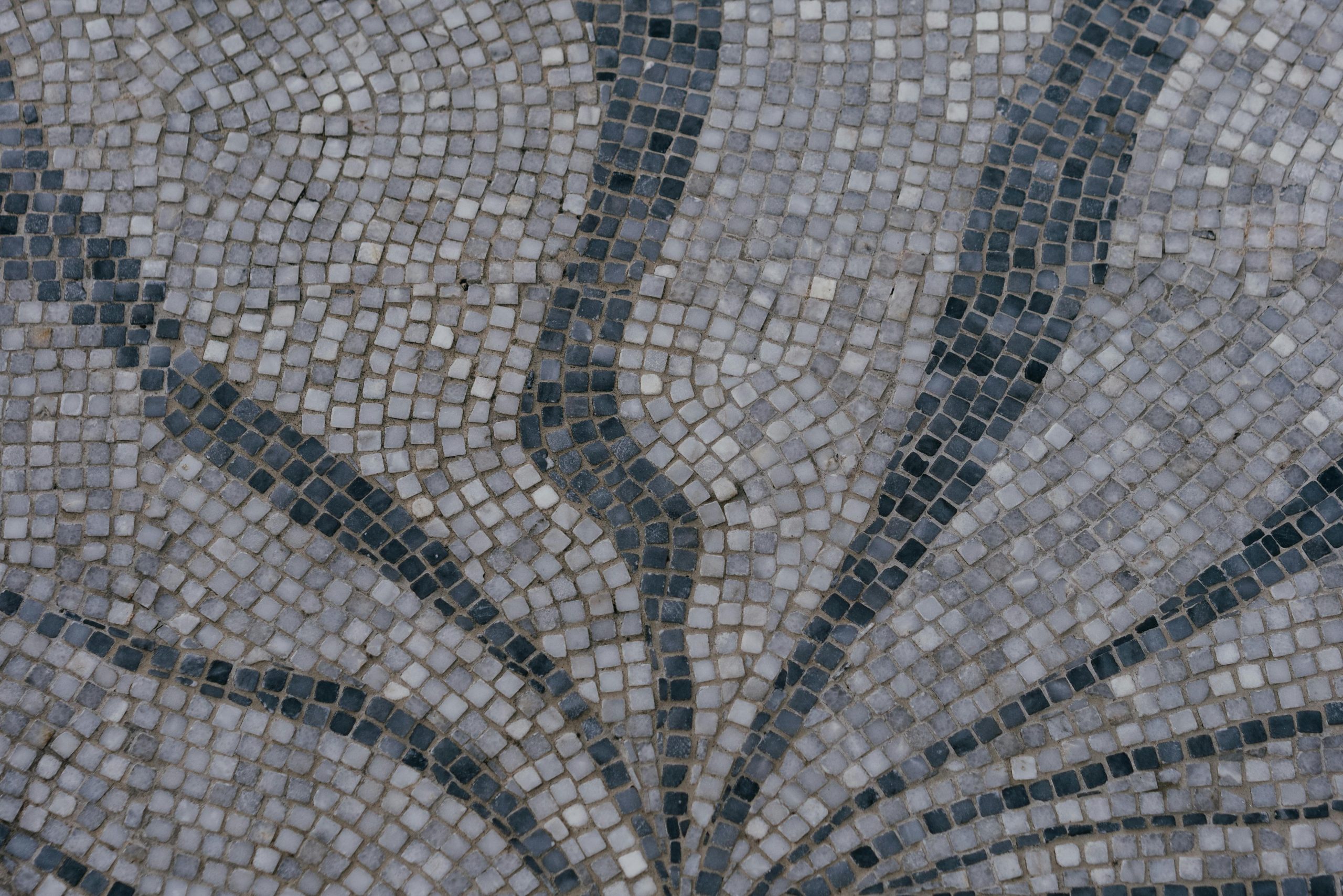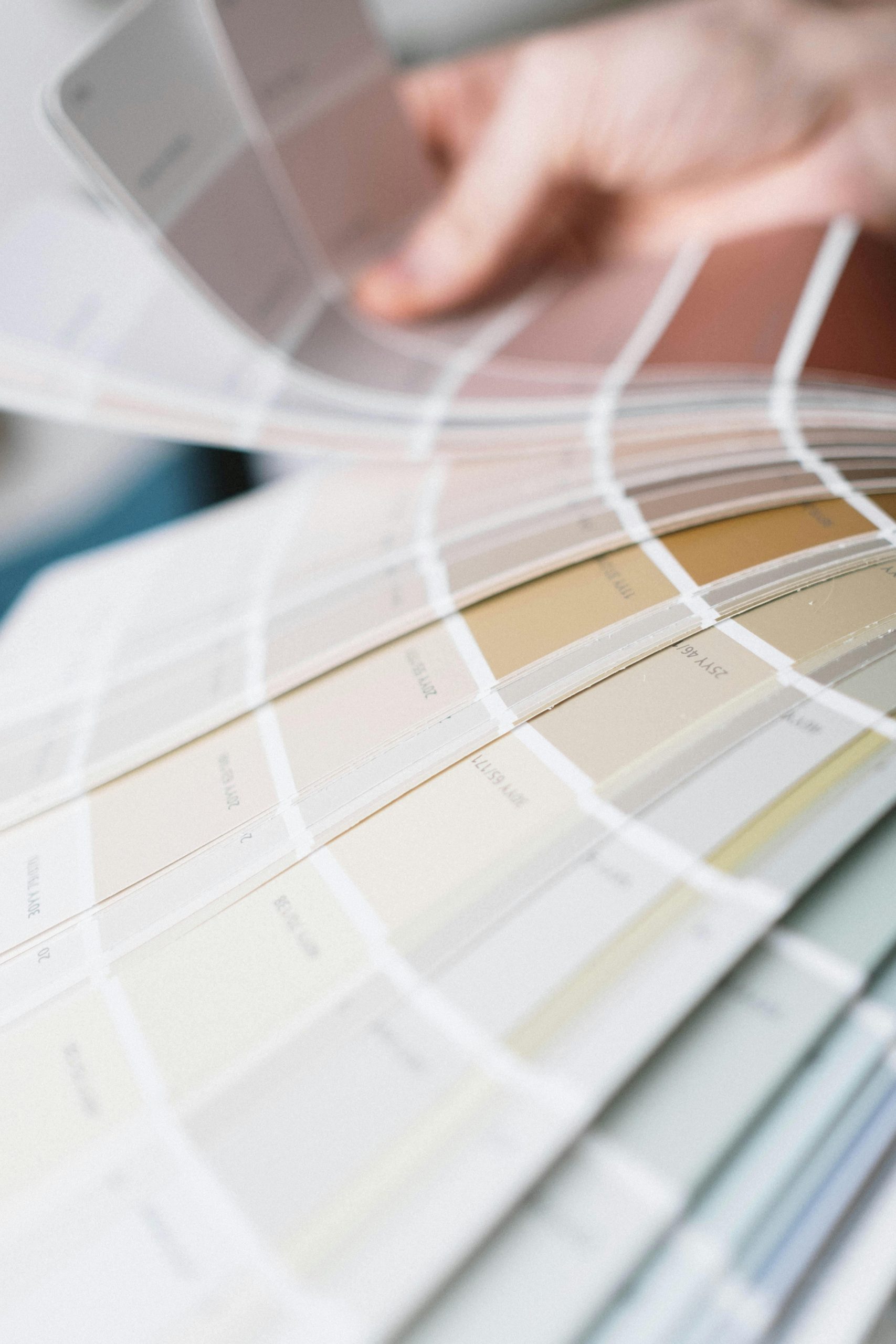Introduction to Grout and Its Role in Tile Design
Contents

Understanding Grout
Grout is essential in tile installations, filling the spaces between tiles and ensuring they stay securely in place. It is a key component that impacts the longevity and durability of the tile work.
Importance in Aesthetics and Functionality
Grout color plays a crucial role in the overall look of a tiled area. Selecting the appropriate grout color can either highlight your tiles or help them blend with your design. Additionally, the right grout protects tile edges from damage, combining both aesthetic and functional benefits.
Factors to Consider Before Choosing Grout Color

Color Coordination with Tiles
Selecting the appropriate grout color for gray tiles is crucial for achieving the desired effect. A lighter grout can emphasize the tile pattern, while a darker grout can create a more cohesive and subtle appearance.
The Impact of Natural and Artificial Lighting
- Natural light can change how grout color looks throughout the day, so it’s important to test colors in different lighting conditions.
- Artificial lighting can either highlight or dull grout colors, affecting the room’s overall feel.
Room Size and Grout Color Perception
Lighter grout visually enlarges a space, making it ideal for smaller rooms. Darker grout adds depth and warmth, making it suitable for larger areas.
Maintenance and Upkeep Considerations
- Darker grout hides stains better and needs less frequent cleaning.
- Lighter grout may require more upkeep but can make a room look brighter.
Overview of Grout Types and Their Properties

Cement-Based Grout
Cement-based grout is popular for its affordability and flexibility, making it ideal for ceramic and porcelain tiles. It tends to absorb water and stains more easily than other types, so sealing is essential to preserve its look.
Epoxy Grout
Epoxy grout is highly resistant to stains and chemicals, making it perfect for kitchens and bathrooms. Its durability and low absorption rate make it a top choice, though it is more expensive.
Furan Resin Grout
- Made from fortified alcohols and resins, Furan resin grout is designed for harsh conditions.
- It offers excellent resistance to acids, oils, and solvents, making it ideal for industrial use.
- Despite its durability, it requires professional installation due to its complex mixing process.
Benefits of Proper Grout Selection

Enhancing Tile Durability
Selecting the appropriate grout is essential for the durability of your tiles. The right grout safeguards tile edges from damage, thereby prolonging the lifespan of your flooring or wall installations. This durability is especially critical in high-traffic areas, where tiles are frequently subjected to wear and tear.
Aesthetic Enhancement
Grout significantly influences tile aesthetics. Choosing the right grout color and type can either highlight your tiles or create a seamless look, based on your preference. This decision can change the appearance of a room, adding either a subtle touch or a striking feature to your space.
Ease of Maintenance
- Selecting the right grout makes cleaning and upkeep easier. Epoxy grout, for example, resists stains and doesn’t need frequent sealing, making it ideal for high-traffic areas.
- Opt for a grout color that matches your lifestyle and the room’s use to minimize visible stains and reduce maintenance.
Grout Color Options for Gray Tile: Best Choices for Your Space
White Grout with Gray Tile: Aesthetic Appeal vs. Upkeep
Imagine the clean lines of white grout intersecting with the subtle elegance of gray tile. This combination is more than just a design choice; it’s a statement. The contrast is striking, the look is modern, and it clearly shows a space designed with contemporary sophistication.
However, beauty often comes with a price. White grout, while visually appealing, easily shows stains and dirt. This requires a consistent cleaning routine. In high-traffic areas or places exposed to moisture, extra care is needed to prevent discoloration and mold.
Weigh the balance: the appeal of a captivating design versus the reality of its maintenance. For those willing to commit to regular upkeep, the reward is a space that stays as pristine as the day it was created.

Pros and Cons of Using Grey Grout with Gray Tile
Imagine a canvas of gray tiles, each piece artfully laid out to craft a space that whispers elegance. Selecting grey grout to pair with these tiles is more than a design choice; it’s a statement of style. The subtle blend of grout and tile forges a sleek, uninterrupted visual flow, perfect for amplifying the spaciousness of any area.
Grey grout is not just about looks; it’s a practical ally in your battle against grime. Stains that would shout from lighter grout lines merely whisper against the forgiving grey, allowing for a pristine appearance with less scrubbing.
Yet, in this sea of grey, one might miss the drama of contrast. The very essence of uniformity can sometimes mute the room’s vitality, leaving a desire for definition unmet. When the goal is to showcase texture or pattern, the monochrome approach may fall short.

Decisions in design are a delicate balance, a dance between personal taste and the inherent qualities of materials. Consider these points:
- Visual Expansion – Grey grout lines blend with tiles, creating an illusion of a wider space.
- Maintenance Ease – Hides dirt and stains, offering a low-maintenance surface.
- Subtle Sophistication – Achieves a minimalist, contemporary vibe effortlessly.
- Depth and Interest – May require additional elements to prevent a flat look.
Pros and Cons of Black Grout with Gray Tile
Imagine gray tiles as the base for a striking contrast. Adding black grout frames each tile with clear definition. This choice is a significant design decision that stands out.
However, there are practical considerations. In smaller spaces, black grout can make the area feel more confined. It effectively hides dirt and spills, but water spots and soap scum are more noticeable, requiring regular cleaning.
Choosing black grout with gray tiles means embracing contrast and balancing maintenance with a modern look.

Choosing Brown Grout for Gray Tile: Aesthetic Impact and Considerations
Imagine the warmth of a coffee shop combined with the sleekness of a contemporary loft. Pairing brown grout with gray tile achieves this effect, blending the cool tones of gray with the earthy richness of brown. This combination can elevate your space from ordinary to extraordinary.
However, this choice comes with considerations. Brown grout can give your space a more classic or rustic feel, which might conflict with a modern aesthetic. It’s a bold choice that demands precision; any misalignment in your tiles will be highlighted by the darker grout lines.
When designing a space, every detail matters. Choosing brown grout for your gray tiles makes a statement; it sets the stage for a room that is both inviting and stylish.

- Contrast and Warmth: Adds a striking visual contrast and warmth.
- Depth and Comfort: Creates depth and a comfortable ambiance.
- Cohesive Design: Complements natural decor elements for a grounded look.
Selecting the Perfect Grout Color for Gray Tile
Imagine the effect you want with your gray tile. Seamless sophistication? A gray grout blends quietly, creating a sleek, unified look. Or a bold statement? Use white or black grout to frame each tile, adding contrast and texture to your space.
Consider how light affects the room. Grout shades change throughout the day, so test samples in the actual space. Bright areas may wash out light grays, while dark grays can create striking contours.
Think about maintenance. Want simplicity? Darker grouts hide spills and smudges, making upkeep easier. Prefer brightness? Light grouts brighten the space but require more frequent cleaning.
Your style is key. Use these tips to choose a grout color that balances trend and timelessness.
The Impact of Grout Color on Gray Tiled Rooms
Grout color significantly influences a room’s appearance. Choosing a light grout can make a gray-tiled space feel larger and more open. Light grout creates an airy effect.
On the other hand, dark grout highlights each tile, offering a bold look while effectively concealing dirt and wear. It adds a striking contrast.
A mid-tone grout provides a balanced look, complementing the gray tiles without overpowering them. For a cohesive and serene appearance, select a grout color that closely matches the tile.
For a more adventurous design, opt for a vibrant grout to add unexpected harmony to the room’s color scheme.
Your grout choice completes your design. Whether you prefer the brightness of light grout or the boldness of dark grout, each option enhances the gray tile and defines your space.
In Closing
Choosing the right grout color can turn gray tiles into a standout feature. It enhances both the visual appeal and practical maintenance of the space. By considering factors like lighting, room size, and upkeep, homeowners can create a cohesive and durable tiled environment. Make sure your grout choice not only complements the gray tiles but also aligns with your personal style and the unique character of your home.
- Are there any trendy grout colors for gray tiles that I should consider?Trendy grout colors for gray tiles include hues like light blue, soft green, or even metallics for a contemporary edge. These colors can add a modern twist and serve as an unexpected design element in your space. Always consider how trends may age over time and whether you're willing to change the grout color in the future if it falls out of fashion.
- Can I use white grout with gray tiles?Yes, white grout can be used with gray tiles to create a classic, clean contrast. The white grout lines will highlight the geometric patterns of the tiles, making the gray color stand out more. This combination is popular in both traditional and contemporary designs.
- Does the size of the grout line affect the color choice for gray tiles?Yes, the size of the grout line can influence the color choice for gray tiles. Wider grout lines make the grout color more prominent, so choosing a color that complements the tile is crucial. For thinner grout lines, the color choice is less impactful but should still be harmonious with the tile.
- How do I choose the right shade of gray grout for my gray tiles?Choose a gray grout that is one or two shades lighter or darker than your tile for a subtle contrast. This will allow the grout lines to be visible without overpowering the tile itself. It's important to compare grout samples against your tile in the lighting of your room to make the best choice.
- How does lighting affect the choice of grout color with gray tiles?Lighting can significantly affect how grout color appears with gray tiles. Natural light can make grout appear lighter, while artificial lighting can alter the perceived color temperature of the grout. It's recommended to view grout samples in the actual lighting conditions of your space before making a decision.
- Is dark grout a good choice for gray tiles?Dark grout, such as charcoal or black, is a good choice for gray tiles if you want to create a bold look. It emphasizes the grid pattern and adds a dramatic effect to the space. Dark grout is also practical as it tends to show less staining over time.
- Should I consider colored grout with gray tiles?Colored grout can be a unique and playful choice with gray tiles, depending on the desired effect. Bright or contrasting grout colors can add a pop of personality and can complement or accentuate other colors in the room. However, it's important to consider the long-term appeal and how it might affect the resale value of your home.
- What are the maintenance considerations for grout color with gray tiles?Lighter grout colors tend to show dirt and stains more easily, requiring more frequent cleaning. Darker grout is more forgiving with dirt but can fade or discolor over time if not properly sealed. Choose a grout color that balances aesthetics with your willingness to perform regular maintenance.
- What grout color should I use for gray tiles in a small bathroom?For a small bathroom, using a grout color similar to the gray tiles can make the space appear larger. This creates a continuous look that doesn't break up the space visually with contrasting grout lines. If you want to add depth, a slightly darker grout can achieve this without segmenting the room too much.
- What is the best grout color to use with gray tile for a seamless look?A matching gray grout is best for a seamless look with gray tiles. It creates a uniform appearance that makes the tiling look like one continuous surface. This is ideal for a minimalist or modern aesthetic where the focus is on the tile's texture rather than the pattern.
